|
1972 Correct Craft Skier MacSkier
(6/18/15) I asked Mark: I'm drawing a wiring schematic for my boat.
Mark: Choke heater, power & ground ... don't care much for the ground going to the carb body ... should be in a harness that goes back to chassis/engine ground. I wondered about that ground, and will properly ground it. Should the power stay "on" all the time? I find no mention of it in my manual -- or on the 'web where I've looked. Reply: The power comes on only when running (with a ignition switched circuit) ... I think that circuit on cars was a 10 amp fuse. I would also test the heater to make sure it works ... if you power it, after about 5 minutes or so, the side of the unit where the terminals are, should get hot-ish to the touch. Grant: I had found (and read) that via google earlier. Maybe I'm just stupid, but it really doesn't help me understand the function of a choke heater. Is the choke "on" until the heater turns it "off?" Mark: Yes, the cold bimetallic coil holds the choke plate closed against the incoming vacuum pressure applied to the choke flap, as the choke heater warms up the bimetallic coil, it will slowly expand, or unwind the tension, allowing the choke to open fully. Thanks. That's what I was thinking, but could not find the explanation. I'm now wondering if a simple manual choke might do a better job of controlling the choke. Mark: Electric is better. I've been re-reading that article linked above: Pros and Cons (opinion of the author) Electric chokes are functionally the poorest form of automatic choke, as the choke is controlled by a pre-set time, based on the heating element rather than engine temperature control. They are not even consistent from engine to engine, as the voltage applied by the electrical system will have a bearing on the time. The only "pro" for the electric choke is that they may be used on modified engines with aftermarket manifolds that have no provision for either divorced or hot air integral choke. This issue has been addressed in recent years (what is recent?) in the aftermarket, as a "tunable" voltage control is available. This improves the electric choke, but only in that the operator can set the timing. The choke still doesn't know the engine temperature. If a control is available that senses engine temperature and choke plate opening position I am unaware of it. Photos of "hot test" described above: 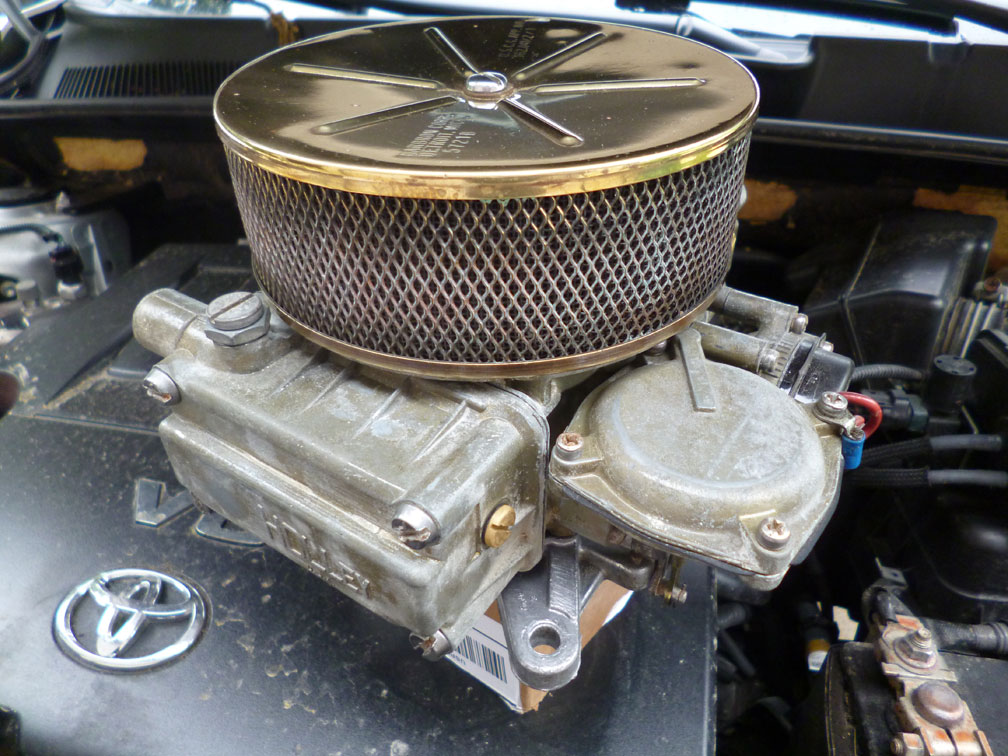
Boat's Holley in RAV4's engine compartment. Click photo for larger image.
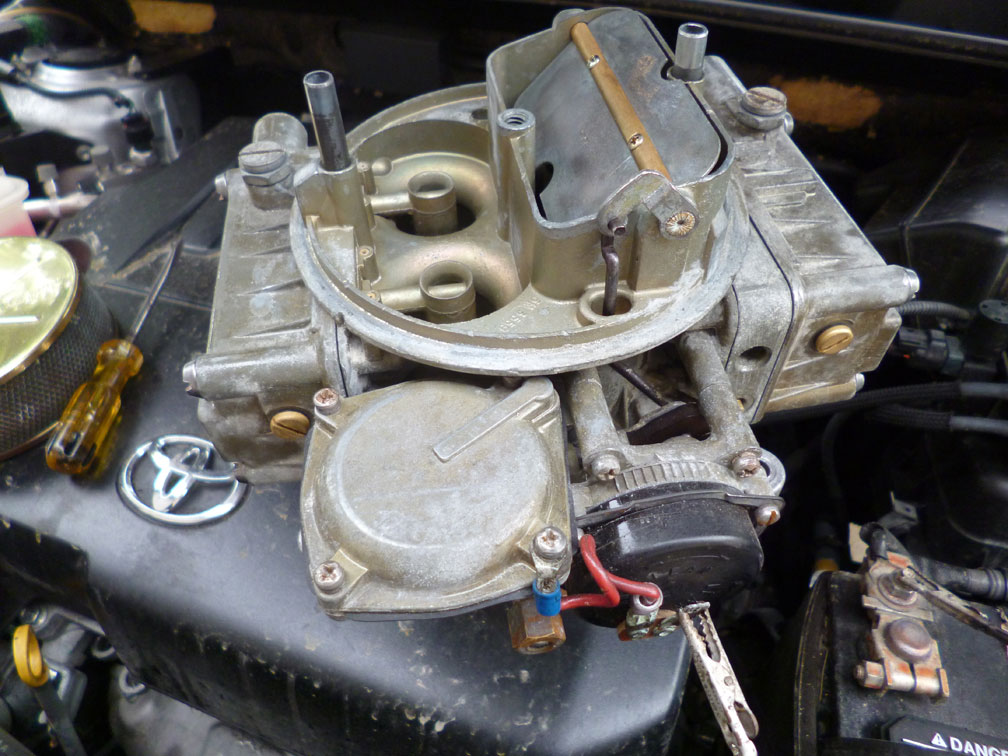
Ready to complete 12v to choke heater circuit. Note choke plate. Click photo for larger image.
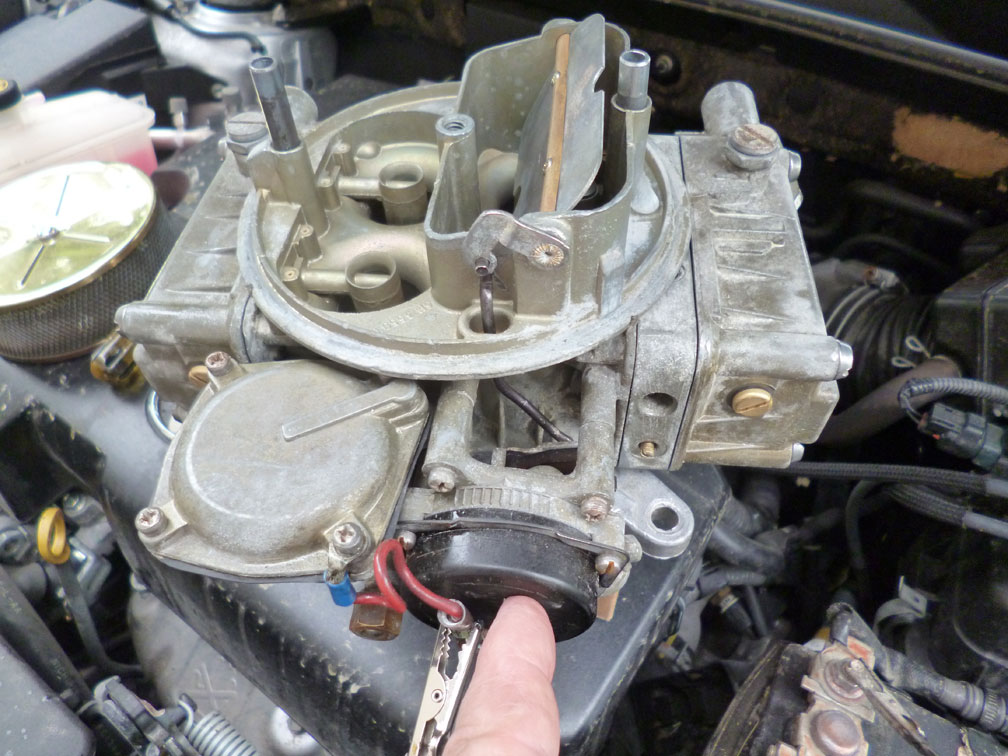
Circuit completed. Feel heat. Click photo for larger image.
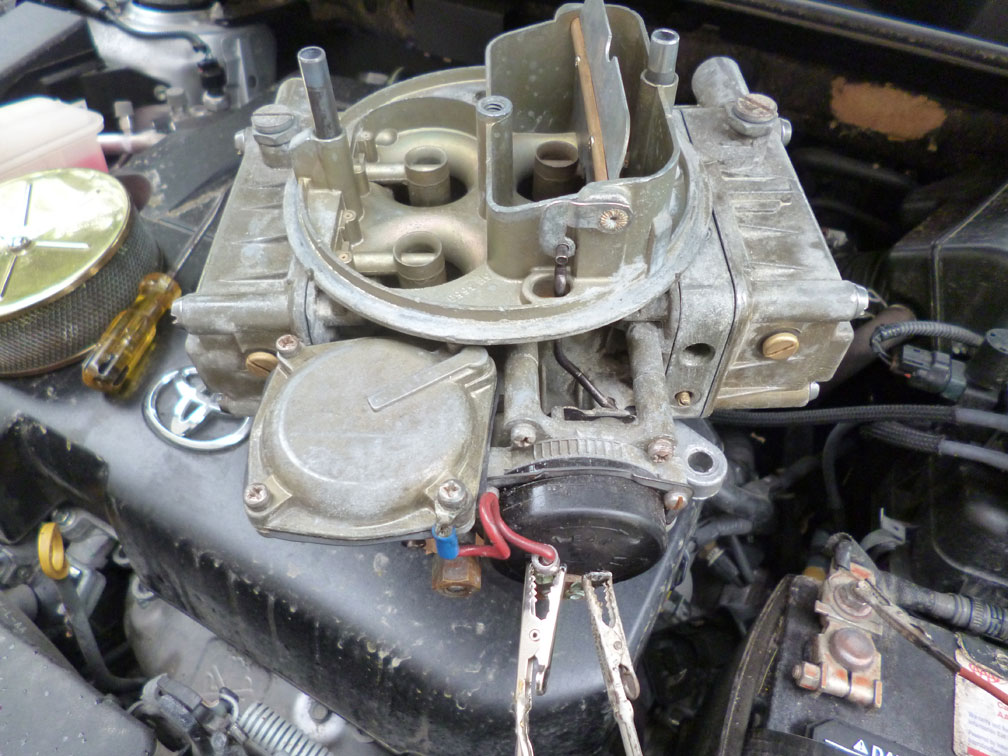
Circuit completed for 3 minutes. Note choke plate. Click photo for larger image. Thanks. With better descriptive terms I was able to find much more good info.
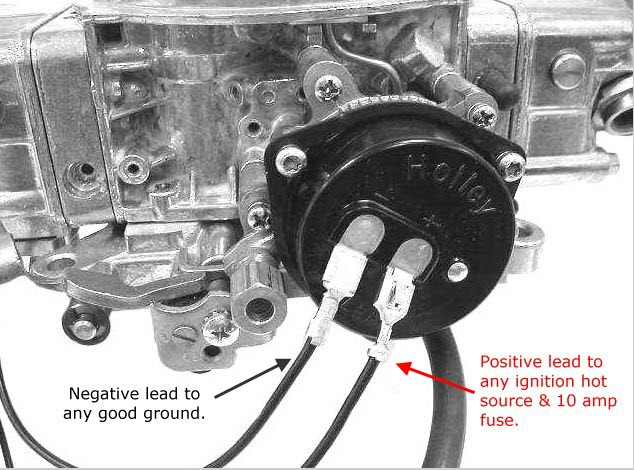
Another pretty good web page by Grant MacLaren
|